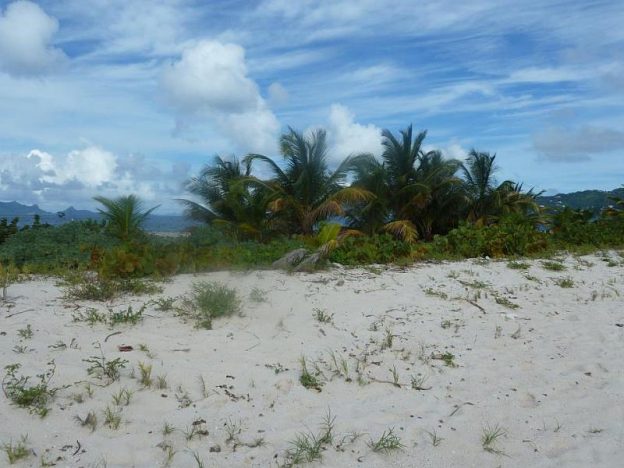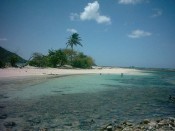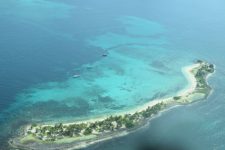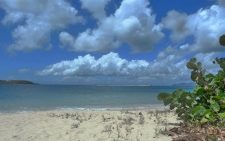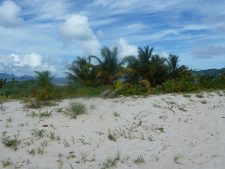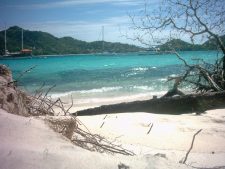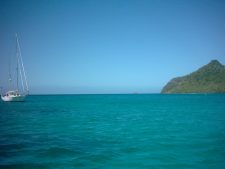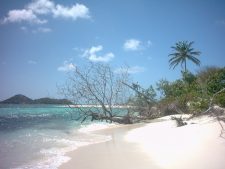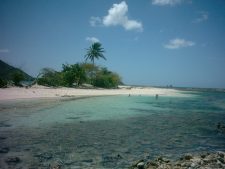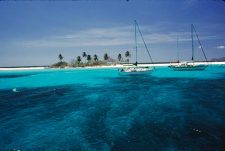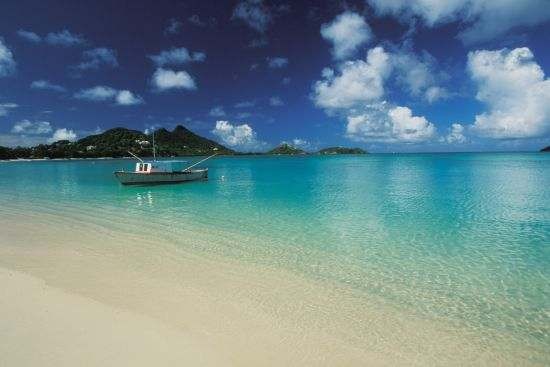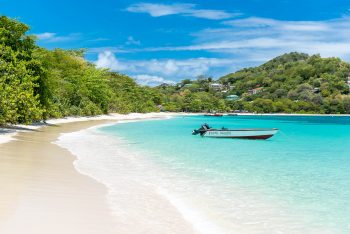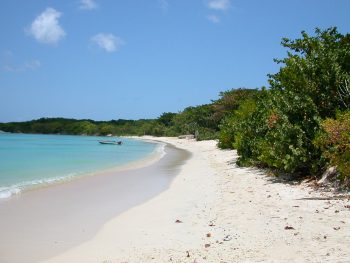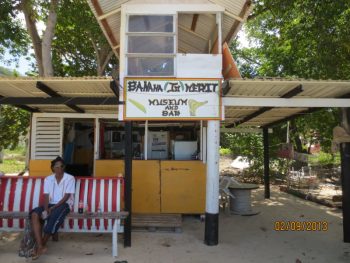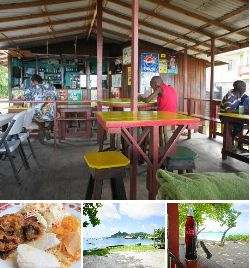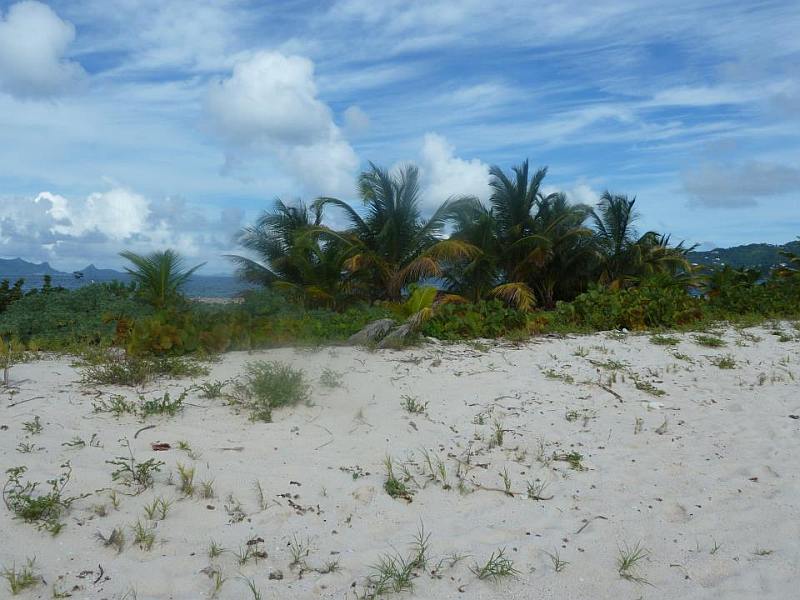
After hurricane Ivan the last two large palms on Sandy Island were destroyed.
Since then there has been a lot of effort in re-vegetating the island.
With succes, there is plenty new growth again, this helps to keep the sand together.
You’d be hard pressed to conceive a more fitting name for Sandy Island in the eastern Caribbean.
The island is little more than a spit of sand on an unassuming cay off the west coast of Carriacou, Grenada.
The island provides a Gilligan-like backdrop for picnicking and snorkeling on an uninhabited white-sand isle.
Getting to Sandy Island requires a bit of planning, but most vacationers find the experience is worth the trouble.
Thanks to concerned islanders and conservationists, the reef and surrounding ecosystem have been deemed a protected area.
A zone where fish nurseries can thrive – providing snorkelers with a wide assortment of colorful sea life.
Sandy Island and Oyster Bed Marine Protected Area.
The installation of new moorings was funded by a grant from UKAID.
It was implemented by CARIBSAVE and the Caribbean Community Climate Change Centre (5Cs), as part of the Caribbean Fish Sanctuary Partnership Initiative (C-FISH) Initiative..
[youtube https://www.youtube.com/watch?v=87Bf3e3C9CA]
Snorkeling tips for Sandy Island.
Getting to Sandy Island by boat.
Traveling to Sandy Island requires a bit of island hopping and schedule juggling.
Don’t expect to see taxis pulling up and offering prepackaged rides to the island, and don’t expect most cruise lines to offer a formal island excursion.
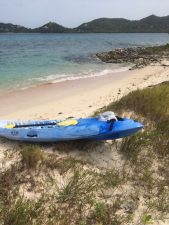 But if you smile at the idea of trekking out on your own to play Gilligan for a day, Sandy Island might be for you.
But if you smile at the idea of trekking out on your own to play Gilligan for a day, Sandy Island might be for you.
The simplest and least expensive way to reach Sandy Island is to take the morning Osprey Ferry from the main island of Grenada to the smaller island, Carriacou.
This trip between Grenada and Carriacou takes about one and a half hours but varies depending on wind and sea conditions.
From the small port in Hillsborough,Carriacou, you can take a taxi or mini-bus – which is significantly less expensive and reasonably easy to navigate – to Paradise Beach.
Upon your arrival at Paradise Beach, you should be able to find a water taxi captain at the Hardwood Restaurant who can shuttle you to nearby Sandy Island.
- Paradise Beach on Carriacou.
- South of Paradise beach on Carriacou.
- White sandy paradise beach.
- Viewing northside of Paradise beach carriacou.
- Joe adams runs this great little bar on Paradise Beach Carriacou.
- Off the hook beach restaurant – Paradise Beach.
Make sure you arrange your return trip in time to catch the Osprey Ferry back to the mainland unless you plan to spend a night on Carriacou.
Tropical Fish around Sandy Island.
A gradual resurgence of Grenada’s reef system, oyster beds and mangroves provides a fair source of protection for fish nurseries.
You’ll likely spy several species of tropical fish, considering that more than 200 species were documented in Grenadian waters during the REEF Fish Survey report in 2009.
The brown chromis is most common, but you’re likely to glimpse many blueheads, bicolor damselfish, four-eye butterfly fish and French grunts.
Other notable sightings frequently sighted in the 2009 surveys included trumpet fish, snapper, stoplight parrot fish and even puffer fish.
Sandy Island reef and Coral conditions.
Shallow reef and rock fringes Sandy Island and provide an interesting backdrop for snorkeling.
Beginning in 1996, crews began monitoring the health of Sandy Island’s coral after Carriacou residents expressed concerns about damage to the reef system.
Although initial surveys revealed massive die-offs of elkhorn coral and sea urchins, these and other species are making resurgence.
Large amounts of the elkhorn and brain coral, damaged in part by coral disease in the late 1970s and early 1980s, are still completely intact and viewable while snorkeling.
Deeper corals, including sea whips, sea fans, boulder coral and starlet coral, are intact and appear healthy.
Environmental Protection of the island.
In 2010, Grenada established the Sandy Island/ Oyster Bed Marine Protected Area (SIOBMPA) to protect, preserve and re-establish the area’s reef, mangroves and sea grass beds.
With support from the Nature Conservancy, this initiative included limitations on reef fishing and the establishment of a marine-protected zone and designated boat moorings at Sandy Island.
The Grenada Board of Tourism for Carriacou has launched several protective initiatives to limit harm from the impact of tourism, damage from yacht anchors and yacht discharge and overfishing.
The protected area is currently utilized as an educational and research site and is leading to the development of new reef management techniques.
